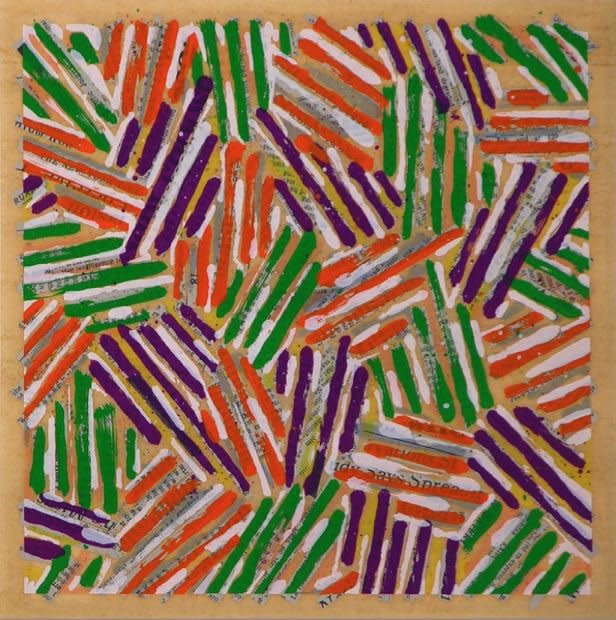The American flag subject is typical of Johns' use of quotidian imagery in the mid- to late 1950s. As he explained, the imagery derives from "things the mind already knows," utterly familiar icons such as flags, targets, stenciled numbers, ale cans, and, slightly later, maps of the U.S.
It has been suggested that the American flag in Johns' work is an autobiographical reference, because a military hero after whom he was named, Sergeant William Jasper, raised the flag in a brave action during the Revolutionary War. Because a flag is a flat object, it may signify flatness or the relative lack of depth in much modernist painting. The flag may of course function as an emblem of the United States and may in turn connote American art, Senator Joseph McCarthy, or the Vietnam War, depending on the date of Johns' use of the image, the date of the viewer's experience of it, or the nationality of the viewer. Or the flag may connote none of these things. Used in Johns' recent work, for example, The Seasons (Summer), an intaglio print of 1987 (1999.407b), it seems inescapably to refer to his own art. In other words, the meaning of the flag in Johns' art suggests the extent to which the "meaning" of this subject matter may be fluid and open to continual reinterpretation.
As Johns became well known-and perhaps as he realized his audience could be relied upon to study his new work-his subjects with a demonstrable prior existence expanded. In addition to popular icons, Johns chose images that he identified in interviews as things he had seen-for example, a pattern of flagstones he glimpsed on a wall while driving. Still later, the "things the mind already knows" became details from famous works of art, such as the Isenheim Altarpiece by Matthias Grünewald (1475/80-1528), which Johns began to trace onto his work in 1981. Throughout his career, Johns has included in most of his art certain marks and shapes that clearly display their derivation from factual, unimagined things in the world, including handprints and footprints, casts of parts of the body, or stamps made from objects found in his studio, such as the rim of a tin can.
